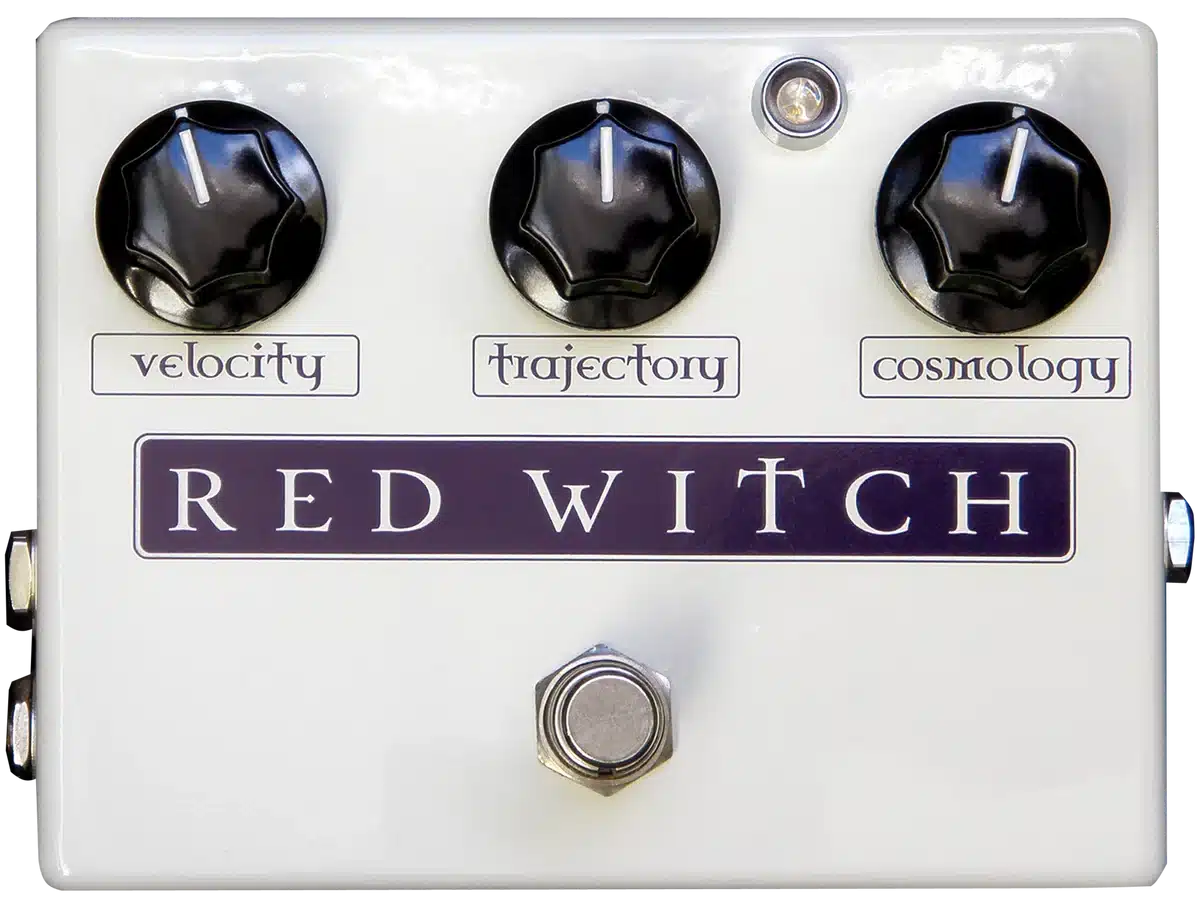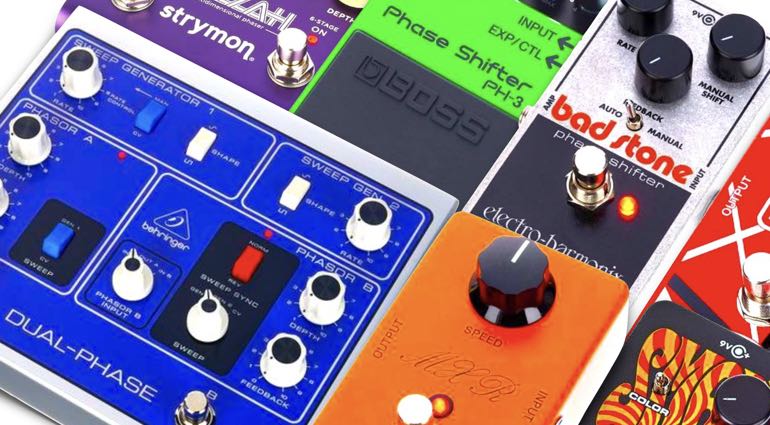The History of the Phaser Pedal is a simple guide to the iconic modulation effect behind many worldwide hit records. The phaser pedal’s signature swirling and ethereal tones have been an essential tool in guitarists’ arsenals since the late 1960s. Let’s explore its evolution, technical details, classic models, and how to integrate it into your sound.
The History of the Phaser Pedal
Imagine a sound that whooshes, warbles, and breathes, adding an otherworldly dimension to your guitar tone. The phaser effect is a sonic chameleon that has captivated musicians for decades. Whether you crave subtle shimmer or mind-bending modulation, the phaser is a gateway to endless sonic exploration.
With its swirling, ethereal tones, the phaser pedal has been a staple of guitarists’ sonic arsenals since its emergence in the late 1960s. From psychedelic rock legends to modern-day innovators, the phaser’s ability to transform a simple guitar riff into a sonic dreamscape has secured its place in music history.

The Phaser Origin Story
- 1967: The Shin-Ei Univibe is born, initially aiming to emulate the Leslie rotary speaker effect. However, its unique phase-shifting circuit becomes its defining feature.
- Jimi Hendrix adopted the Univibe for iconic performances like “Star Spangled Banner” at Woodstock, bringing the phase-shifting sound to the forefront of rock music.
- The early 1970s: Refinement of the effect leads to dedicated phaser pedals in more compact and accessible formats.

Iconic Phaser Pedals
- Eventide PS101 (1971): A studio-grade powerhouse, this rack unit set the bar for lushness but came with a premium price tag.
- Maestro PS-1 Phase Shifter (1971): The legendary Tom Oberheim, known for his synthesizer genius, designed Maestro’s entry, resulting in a beautifully expressive phaser.
- Oberheim Electronics Phasor (1973/74): Following the PS-1’s success, Oberheim released a nearly identical yet rarer standalone phaser, sometimes found in a smaller ‘Mini-Phase’ format.
- MXR Phase 90 (1974): The bright orange enclosure and consistent sound established the MXR Phase 90 as the quintessential phaser. It also pioneered the now-standard colour coding for effects pedals.
- Colorsound Supaphase (early 70s): This quirky British phaser, while sometimes inconsistent, offers a raw and gritty character beloved by some players.
- Electro-Harmonix Bad Stone / Small Stone (1974/75): The six-stage Bad Stone offers deeper phasing, while the four-stage Small Stone is a beloved, cleaner-sounding classic. Variations like the Nano and Russian versions are also sought-after.
- Roland Jet Phaser AP7 (1975): This pre-BOSS design combines a fuzz circuit with the phaser section. Pushing the ‘Jet’ mode delivers a wild, overdriven phased sound.
- Boss PH-1 (1977): The original offering in the “traffic light” compact series, featuring a subtle four-stage phaser. Later iterations like the PH-1r (with resonance) and modern reissues expand its range.
- Mu-Tron Phasor II (1977): A feature-rich phaser catering to synthesists and adventurous guitarists, offering complex controls and reportedly favoured by Stevie Wonder. Mu-Tron’s recent revival brings back updated takes on this cult classic.
- DOD Phasor (Models 401, 201, 490): These versatile workhorses have increasing features through their model numbers. The 490 stands out for its richer sound and controls.
- Pearl PH-44 Phaser (mid-80s): Dubbed “the greatest pedal of all time” by ZVex founder Zachary Vex, it exemplifies the quirky designs of the era, with push buttons and manual feedback.
- Ibanez PH7, AP7, PM7 (1999): This ‘Tone-Lok‘ trio marked a mainstream push for phasers. The PM7’s multiple waveforms (saw, square, triangle) offer exceptional versatility.

Understanding the Phaser Effect
- Technical Breakdown: An audio signal is split into ‘dry’ (unaltered) and ‘wet’ paths. The wet signal travels through a series of all-pass filters, each subtly delaying and shifting the phase of specific frequencies. A low-frequency oscillator (LFO) controls the rate at which these filters sweep across the frequency spectrum, creating the characteristic swooshing effect when the wet signal recombines with the dry.
- Stages and Feedback: More all-pass filters (stages) create a denser, more complex phaser sound. The feedback control reintroduces the effected output back into the input, intensifying the effect and potentially leading to self-oscillation.

Phaser Pedal Controls & Placement
- Essential Controls: Rate/Speed, Depth, Feedback, Level/Mix/Blend (explained as before)
- Placement: It is traditionally near the end of the chain, after overdrive/distortion but before reverb/delay for the most defined effect. Experiment by placing it elsewhere for unique results!
The Phaser vs. Flanger vs. Chorus
- Phaser: Phase shifting via all-pass filters for a unique, swirling “whoosh”.
- Flanger: Employs a short, modulated delay for a “jet plane” or comb-filter effect.
- Chorus: Creates gentle pitch modulation and doubling for a lush, spacious sound.
Phaser Pedals in Action
- Jimi Hendrix – “Star Spangled Banner” (Univibe)
- Eddie Van Halen – “Atomic Punk” (MXR Phase 90)
- Pink Floyd – “Shine On You Crazy Diamond” (MXR Phase 90)
- Smashing Pumpkins – “Cherub Rock” (Electro-Harmonix Small Stone)
- Radiohead – “Paranoid Android” (Boss PH-3)
Set Phasers to Stun!
The phaser’s enduring appeal lies in its adaptability. From subtle textures to mind-bending sonic journeys, it’s a tool that rewards curiosity. Don’t just follow the legends – explore extreme settings, push it before or after other effects, and even blend it with non-guitar signals. The phaser invites you to break the rules and forge your sonic signature.

Guitar Bomb Favourites
My current favourites include my old chrome Red Witch Deluxe Moon Phaser and the Strymon Mobius, which is more than just a phaser. I also enjoy the recently released Behringer Dual-Phase (a clone of the original Mutron Bi-Phase). Both offer different takes on the phasing effect. Thankfully, the excellent quality modern-day phase pedals allow plenty of options for your guitar rig or studio setup.

Subtle Movement and Beyond…
They can add subtle modulation, add movement to your notes, or be set to all-out chaos to create a bold statement. Whether you want the funk, dub, indie, rock or just massive, spacious, swirling psychedelic tones, the phaser effect has you covered.
It phaser reminds us that music isn’t just about the notes we play but the spaces between them. Its swirling, transformative power highlights the importance of dynamics, atmosphere, and the willingness to let our soundscapes breathe and evolve. The phaser teaches us to listen attentively to the shifting textures and the melody itself, pushing us beyond mere playing towards true sonic artistry.
If you like pedals, be sure to read our Top 5 Distortion and Overdrive Pedals and How To Use Them
Guitar Bomb Top 10 Modern-Day Phaser Pedals at Thomann
- Behringer Dual-Phase
- Boss PH-3
- Electro Harmonix Bad Stone
- Electro Harmonix Small Stone
- MXR Phase 90
- MXR M290 Phase 95
- MXR Custom Shop Phase 90 LED
- MXR EVH Phase 90
- Strymon ZelZah Dual Phaser
- Warm Audio Mutation Phasor II
Video




This article contains affiliate links to Thomann that help finance the running costs of GuitarBomb. We will receive a small commission if you buy something through these links. Don’t worry, as you pay the same price, and it costs you no extra to use these affiliate links for your purchases.

